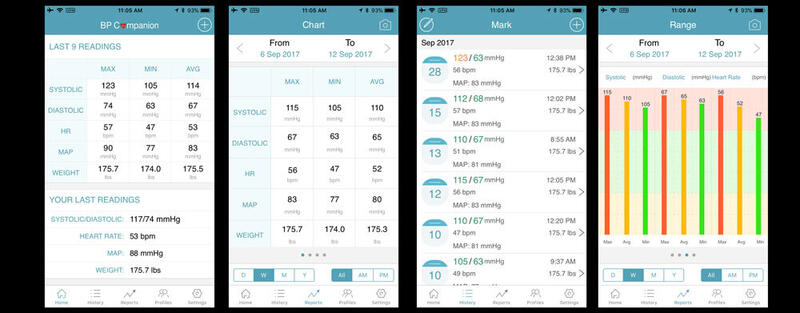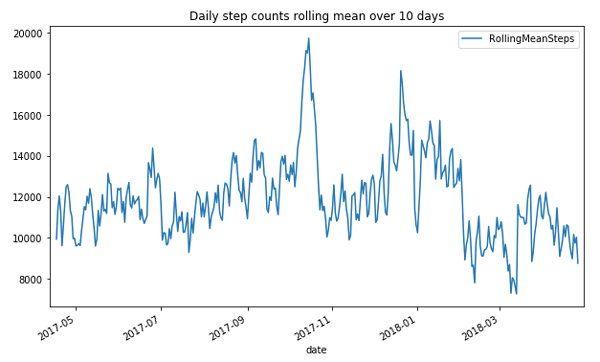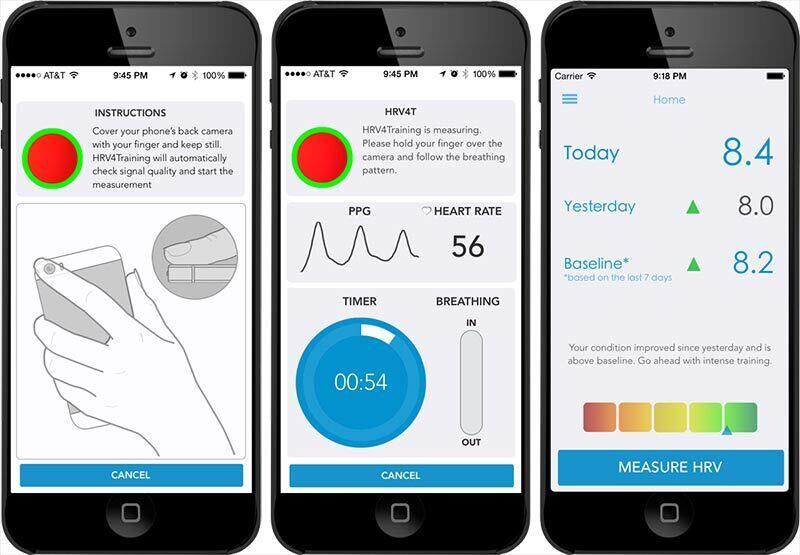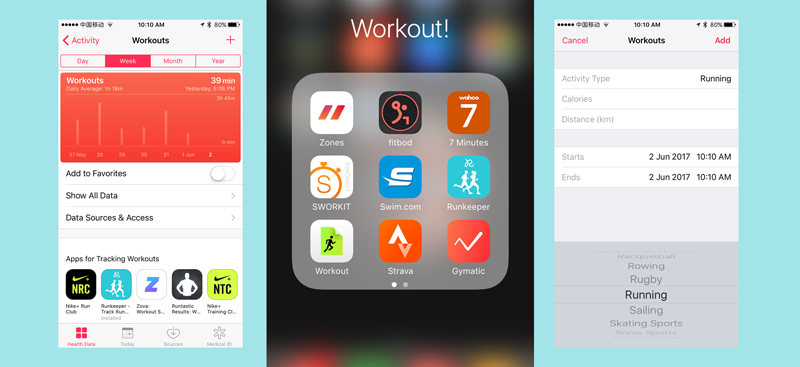A data-driven health tracker is a tool you can use to track and monitor different aspects of either your health status or your health habits. This can empower you on your journey towards data-driven health and personal development.
I recently wrote about the importance of understanding the difference between heath and fitness apps and wearables that monitor your health status VS. those that support and track your healthy habits and goals. The key question there was: Are you tracking a health indictor or healthy habit?
In this followup, I want to share my list and breakdown of data-driven health trackers and where they fit on the divide between tracking health status and tracking healthy habits. Where relevant, I’ve included a link to a write-up with more background, tools and how to track.
In turn, I’m working on a write-up of data-driven health numbers to go with these trackers soon.
Hope you find it helpful.
NOTE: If you are looking for an overview of the self-tracking space, checkout my Quantified Self Mind Map.
List of Health Status and Healthy Habits Trackers
As a quick review for those that missed the previous post, a lot of technologies, apps, tests and tools that report to help you track your health are actually ways to track healthy habits.
For our purposes, I define a health status as a scientifically-validated standards of our health. These numbers should be objective, medically-verified and quantifiable. Similar terms are biomarkers, health indictors, and risk factors.
By contrast, a healthy habit are various lifestyle things you do that are good for your body and health. This might be steps, fitness, activities, diet and many others. While we can all generally agree that these are good for your health, it’s not really possible to the same degree of confidence these fitness and health habit numbers with a medical health number.
Health Status Trackers
Along with other medical services, these tools and tests track a defined indicator of your health status and can be used to diagnosis a disease. You might refer to them as biomarker trackers.

- Blood Pressure Monitors: High blood pressure is a well-known health risk factor, especially when combined with smoking, obesity, or genetic markers. You can get this measured at your doctor’s, a health clinic, or even using an at-home monitor. Check out my guide to blood pressure tracking
- Blood Tests and Biomarkers: Blood tests are in my opinion currently the best way to measure your health status. You can get this done at a yearly check-up’s or using direct consumer blood test services. I recommend getting this done once or twice a year. Check out my blood test guide, Know Thy Blood or my blood test biomarker directory for an FAQ and information on the best tests.
- Heart Rate: Heart rate monitoring is typically most useful in measuring fitness changes and training, but heart Rate (especially an irregular heart beat using an ECG) can tell you about irregular heart patterns, which is a health status indicator. Most wearables now can track your HR but I believe the Apple Watch is one of the few consumer wearables that tracks ECG.
Healthy Habits and Fitness Trackers

- Activity Trackers and Wearables, like Apple Watch, Garmin, Samsung, Oura Ring, Fitbit, track steps, heart rate, sitting time, daily standing, sleep and more. Personally my favorite remains Apple Watch for Self-Tracking. The best numbers I find to focus on our steps, daily movement time and sleep. Wearables that provide “health” nudges are useful too to avoid too much sitting and getting hourly walking.
- Sleep Trackers are a range of devices, wearables and apps that let you track how much you sleep and can useful for improving your sleep routines too. By itself, I’m not sure a sleep tracker will do much for you, but combined with a conscious effort to improve the quality and amount of sleep you get, it can be pretty powerful.
- Food, Diet and Fasting Trackers help you know if you are meeting your diet and nutrition goals. Personally, I’ve never been able to use food trackers for long due to how much manual work it takes. Though alternatives exist, MyFitnessPal remains the most popular food tracker today. If you are looking for a simpler approach generic trackers like Nomie can work well to track with a single button healthy habits, like healthy meal, unhealthy meal, healthy snack, unhealthy snack, etc., which I find a quick-and-dirty way to track and manage healthy eating. One aspect of food tracking I’d love to get better at monitoring is counting how many fruits and vegetables I’m eating, which has been shown to be a key risk factor in mortality and many diseases. Get some natural Vitamin E, folks!
- Medication Reminders and Supplements Trackers help you keep up with whatever pills you are taking. They can improve medication adherence and give you a drug history log too. Several good options exist but focus on one that provides good habit formation and smart reminders for when you forget or are traveling. I use RoundHealth to track my vitamins and supplemental protein, which works well and has a nice export.
- Weight, BMI, and Body Fat Percentage are all touted as health indictors and rightly so. They can be used for determining obesity, but the most common usage is for monitoring fitness goals. The most advanced options are smart scales that automatically log your weight to the cloud each time you step on the scale. Personally, I find this overkill since it’s just as easy to use a cheap digital scale and log it manually with an app, google spreadsheet or Apple shortcuts.

- Heart Rate Variability (HRV) is way to measure your chronic stress and recovery over time. HRV technically is measuring the interval between beats and can be used as a biomarker and health status indictor, but mostly I find it fits more with monitoring healthy habits since it correlates with things like sleep, fitness training, drinking, and travel. While HRV is also logged on a lot of wearables now, my favorite HRV tool is HRV4Training which is an app for iOS and Android. I’ve create intro guide to HRV and an advanced guide on the science of HRV.
- Fitness and Sports Trackers are one of the most popular forms of tracking today. Many types exist, like Strava, RunKeeper and others, can record walking, running, cycling, swimming, etc. While they do provide a certain amount of information on your health status, they are most tools in pursuit of fitness goals that go beyond basic health needs. I write pretty regularly on data and running. Two starting points I’d recommend are Run Smart, which talks about benefits of basic run tracking with RunKeeper or Strava, and Data-Driven Training, which is an advanced look at how to train for a marathon or race.

- Strength Training and Workout Logger Apps could be used to track health status too, but they are mostly for more serious strength training. They serve to log your exercise, weight, reps and sets. I currently use FitBod for iOS which is a smart strength coach and logger. I’ve also used and liked Strong, 5x5, and FitJet
- Mobility and Stretching: When I transitioned to a more active and healthy life (including losing a good amount of weight), I came to realize that I need to support my exercise with some stretching and mobility work. These are basically exercise the support healthy joints and movement patterns. Here is my guide to mobility and stretching and how to track it
Other Ways to Measure Your Health, Body and Mood

Roughly 3-months of basal body temperature logs, showing a slight rise before sickness.
- Sickness and Symptom Trackers: I’m fortunate in that I don’t get sick much anymore. If you do get sick often or have a chronic disease, then a sickness or symptom tracker might be a good tool to try. I like Symple on iOS since it gives me another of aspects to log and data export is usable. In general, I do some high-level sick day logging using HRV4Training, which in my year in data showed I only had two sicks day last year.
- Temperature: People generally check are temperature when we have a fever, a chronic disease or in some cases related to female fertility. Our daily changes in body temperature could be a useful and interesting health number if it be used to track your alertness and circadian rhythm. For example, an out of sync temperature cycle could be an indictor of sleep or other health problems. Personally, I’ve not found consumer temperature thermometers to be particularly accurate or consistent, even measuring multiple times within a few minutes. I did a few month experiment of daily temperature readings that didn’t prove particularly insightful besides showing a rising trend leading up to getting sick. To get much benefit it might take repeat daily logging, which proved unsustainable to me.
![]()
- Mental Health can be a serious concern for many people. There are a lot of options for tracking your mood. It can be good option for understand your mood across time and even a day. Here is my review of mood tracking apps. In my mood tracking experiment I shared my takeaway and observations using one method, mostly tracking daily mood rating from 1-5. Unfortunately, I’m still struck a few philosophical and psychological difficulties related to classifying what are moods, an idea I have explored some in a post on the limits to mood tracking.
Healthy Habit with Potential to Determine Health Status
As I noted in my original post Are you tracking a health indictor or healthy habit?, I think there is a range of healthy habit trackers that merit some consideration as applicable and transferrable to monitoring health status. The main requirement though is not just a single data point but a long-term trend. A persistent period of changes in sleep, weight or HRV might indicate something worth looking into using a more standard health test or biomarker. There is a lot of potential in this “middle ground” of health tracking, and much of the data-driven health-tech companies appear to be betting on the potential usefulness here.
Here are a few noteworthy areas in my mind:
- Weight Changes: Sudden changes in weight can be a powerful tool to understanding our health changes, especially in situations where we are eating and sleeping normally. I don’t check or watch my weight that closely, but I do keep enough of an eye on it while training to avoid insufficient fueling and nutrition.
- Sleep: A single night or two of poor sleep might not problematic for our long-term health, but progressive, long-term chronic sleep deprivation just might be. A good degree of research has shown that not getting enough sleep over long periods leads to health problems and changes in our health status indicators. As such, sleep if looked at over time could be useful data point into our health.
- Heart Rate Variability (HRV): I’m a bit fan of HRV as a way to understand shorter-term trends, especially as a way to measure adaption to fitness training or travel. Admittedly, you shouldn’t freak out too much if one morning reading appears particularly low. But, like weight changes, progressive changes in HRV numbers might merit further investigation. In view of how recent consumer access has been to HRV tracking, I suspect we will see more cases of HRV for tracking long-term health changes. Check out my write-up on the science of HRV as one starting point into this amazing trackable health data point.

- VO2 Max and Fitness Level: There is one aspect of fitness tracking that does merit some serious consideration for inclusion as a health status indicator and that’s VO2 Max. You typically get this measured in a lab with a max on your face as you run or cycle to your absolute limit. But increasingly apps can estimate your VO2 max from your run or cycling data using Heart Rate. While VO2 Max is most often using for gauging how fit you are and effect of training, it also representative of your current fitness level. VO2 Max has also been studied by medical researchers and found to be predictive of mortality, certain diseases, biological age and more. Check out my guide to VO2 Max, including the numbers, my lab test, and how to estimate your VO2 Max.
Conclusion: My Advice: Regular Blood Tests and a Wearable with Sleep Tracking
There you have it several data-driven trackers to measure your health status and track your healthy habits.
If you want my advice on one from each type, I’d recommend regular blood testing, especially with a lipids panel, and getting a wearable to track your sleep. Blood biomarkers can slowly change over time, but with regular checks, you can get ahead of any problems. Several commercial options are available for 60-100 usd and seem worth it to me. Plan to spend a bit of time getting up to speed on how to read your numbers and basics of the main blood tests.
Similarly, lack of sleep might not be problematic in the short-term, but long-term it can lead to higher chance of infection and everyday sickness. Not sleeping enough can hurt your learning and impact your gains in any sport, running or strength training. Start recording your sleep and then look at how you feel and perform based on how much you sleep. If you are anything like me, you’ll start to see that getting enough sleep can improve your mood, productivity, creativity and life in general.
The other bonus with most wearables is a pedometer that counts your steps. The basic recommendation is 20 to 30 minutes of light exercise per day, like walking. This is a good place to start. Personally, I find I feel best with about 4-6 hours a week of more strenuous fitness, like running, long walks and strength workouts. Additionally, I think standing and sitting tracker can be good too, especially when combined with an hourly nudge to stand up.
If you found post helpful, tell or share with a friend or join the newsletter to get regular updates!
Best of luck and happy tracking!

Comments